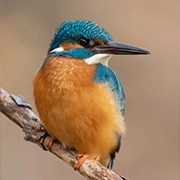Angkor Wat Sunrise Tour

Have you ever dreamed of standing before a massive silhouette as the first rays of sunrise fill the sky with golden light? That's the magic of Angkor Wat, Cambodia's crown jewel.
But exploring Angkor is not just about snapping pictures—it's about diving into centuries of culture, hidden carvings, and local life.
To help you make the most of your visit, here's a detailed guide with practical tips on temple routes, sunrise photo opportunities, and authentic experiences.
Temple Tickets and Opening Hours
Before you explore, get your ticket sorted:
• 1-Day Pass: US$37, valid from dawn to dusk
• 3-Day Pass: US$62, valid over four days
• 7-Day Pass: US$72, valid over one month for relaxed schedules
Temples open daily between 5:00 AM and 6:00 PM. Arriving well before dawn is essential for securing a good sunrise viewing spot at Angkor Wat. Early mornings also mean fewer crowds and softer light—perfect for photography and quiet exploration.
Sunrise at Angkor Wat: Capture the Iconic Moment
Angkor Wat's western causeway is the classic sunrise vantage point. To get the best shot:
1. Arrive around 5:00 AM at the ticket entrance
2. Walk across the moat and aim for a spot on the left side of the outer pool
3. Listen for ceremonial Buddhist chanting around 5:30 AM
4. Stay through sunrise—watch how shadows and light move across the central towers
Pro tips: Use a tripod for low-light sharpness, and experiment with reflections in the pool. If you want a crowd-free frame, stroll slightly East along the causeway for a more minimalist shot.
Curated Temple Routes for Different Interests
Angkor is vast, so having a clear route tailor-made to your pace and interests helps you soak it all in. Here are three focused circuits:
1. Grand Circuit (full day):
• Angkor Wat – Early sunrise visit, then explore inner galleries
• Bayon Temple – Famous for its smiling stone faces
• Baphuon and Phimeanakas – Cliffside ruins with royal carvings
• Terrace of the Elephants & Terrace of the Forgotten King – Great for midday photos and Khmer detail
• Ta Prohm – Overgrown jungle temple, best seen mid-afternoon
2. Highlights Circuit (half day):
• Angkor Wat sunrise
• Ta Prohm late morning to avoid crowds
• End at Preah Khan for a relaxed exploration before midday
3. Hidden Gems (off the beaten path):
• Banteay Kdei – Quiet and lesser-visited with simpler volcanic stones
• Neak Pean – A small temple on a man-made island
• Pre Rup – A rising pyramid with windowed sunset views
Start early—temples open at 7:30 AM—so aim for a schedule like:
5:00–7:00 AM sunrise at Angkor Wat,
7:30–8:30 AM Ta Prohm,
9:00–10:00 AM Preah Khan,
Afternoon return to quiet spots like Banteay Kdei.
Guided Tours vs Independent Exploring
Considering a guide? Here's what experts in Khmer history say: “A licensed guide adds depth—stories of kings, spirits, and stone influences come alive through cultural context.” Guides cost around US$25–40 for a half-day, depending on credentials. Independent explorers should invest in a detailed guidebook or audio tour to appreciate inscriptions and symbolism.
Getting Around the Park
Most visitors use tuk-tuks or bicycles to navigate Angkor's spread.
• Tuk-tuks: Affordable and flexible—expect US$15–25 for a full day, including pick-up and drop-off
• Bicycle: Great for sunrise and shorter routes; rentals cost around US$3–5 per day
• E-bikes: A good balance of speed and energy-saving; priced about US$10–15 per day
Be sure to start early, especially if biking—you'll need energy and hydration quickly as the morning sun warms.
Where to Stay Near Angkor Wat
Smooth travel starts with convenient lodging:
1. Siem Reap Central Hotel – Comfortable rooms, about 10 minutes from the complex
2. Shinta Mani Angkor – Mid-range boutique stay with pool
3. Park Hyatt Siem Reap – Luxury pick with heritage design and spa services
All options include breakfast—perfect for early departures.
Local Food to Refuel
After a morning of temple-hopping, you'll want real fuel:
• Fish amok – Traditional curried fish mousse in banana leaf
• Khmer red curry – More mellow than Thai variants, made with coconut milk
• Num Pang sandwiches – Cambodian baguette snacks with pickles and pork-free fillings
Try places like Marum, which trains at-risk youth, or Sister Srey Café for fresh tropical bowls.
Responsible Visiting and Cultural Respect
Experts in heritage preservation stress limiting visitor numbers during peak seasons, avoiding flash photography inside sanctums, and staying on marked paths. To support conservation, always carry reusable water and don't touch the carvings. Respecting the spiritual atmosphere at dawn and dusk makes Angkor feel alive rather than a photo backdrop.

Reflecting on Your Journey
Exploring Angkor is more than checking off temples—it's a journey through Khmer history, artistry, and spiritual expression. Whether you're mesmerized by carved faces at Bayon or the living roots at Ta Prohm, you're walking through centuries. So, what part are you most looking forward to—the golden sunrise at Angkor Wat, the hidden stories carved in stone, or that caffeine-refueling bowl of local curry?
Tell me what you're planning or dreaming about, and I'll help you bring your Angkor adventure to life!

 · Travel Team
· Travel Team